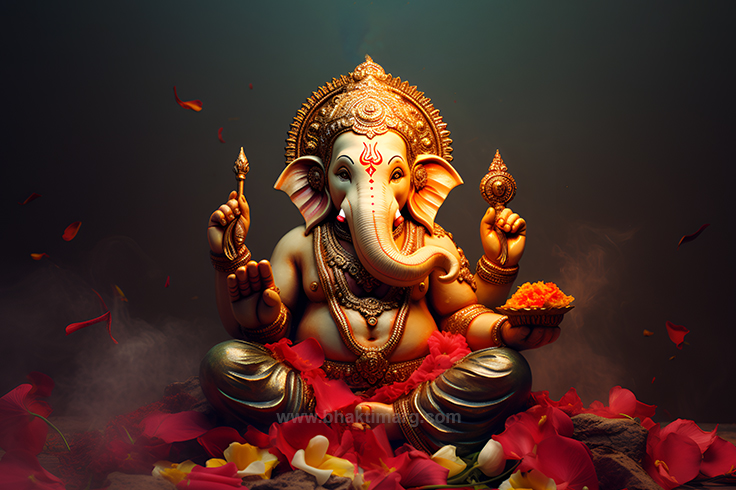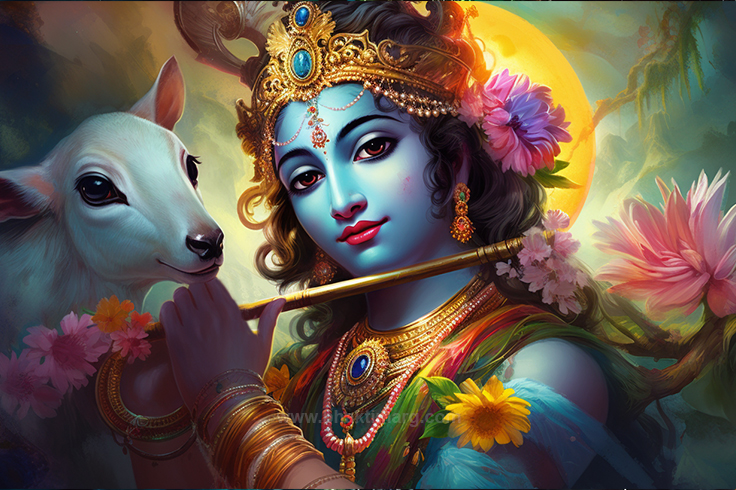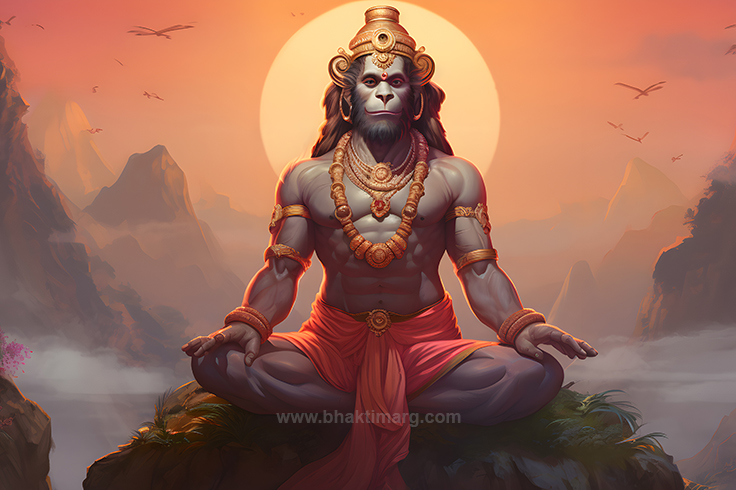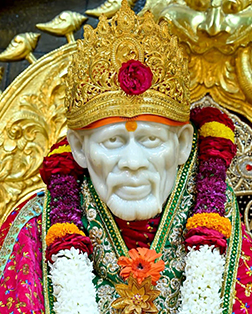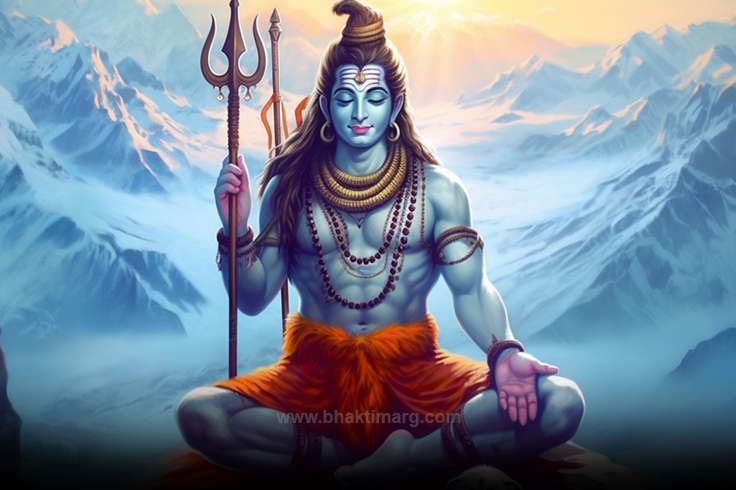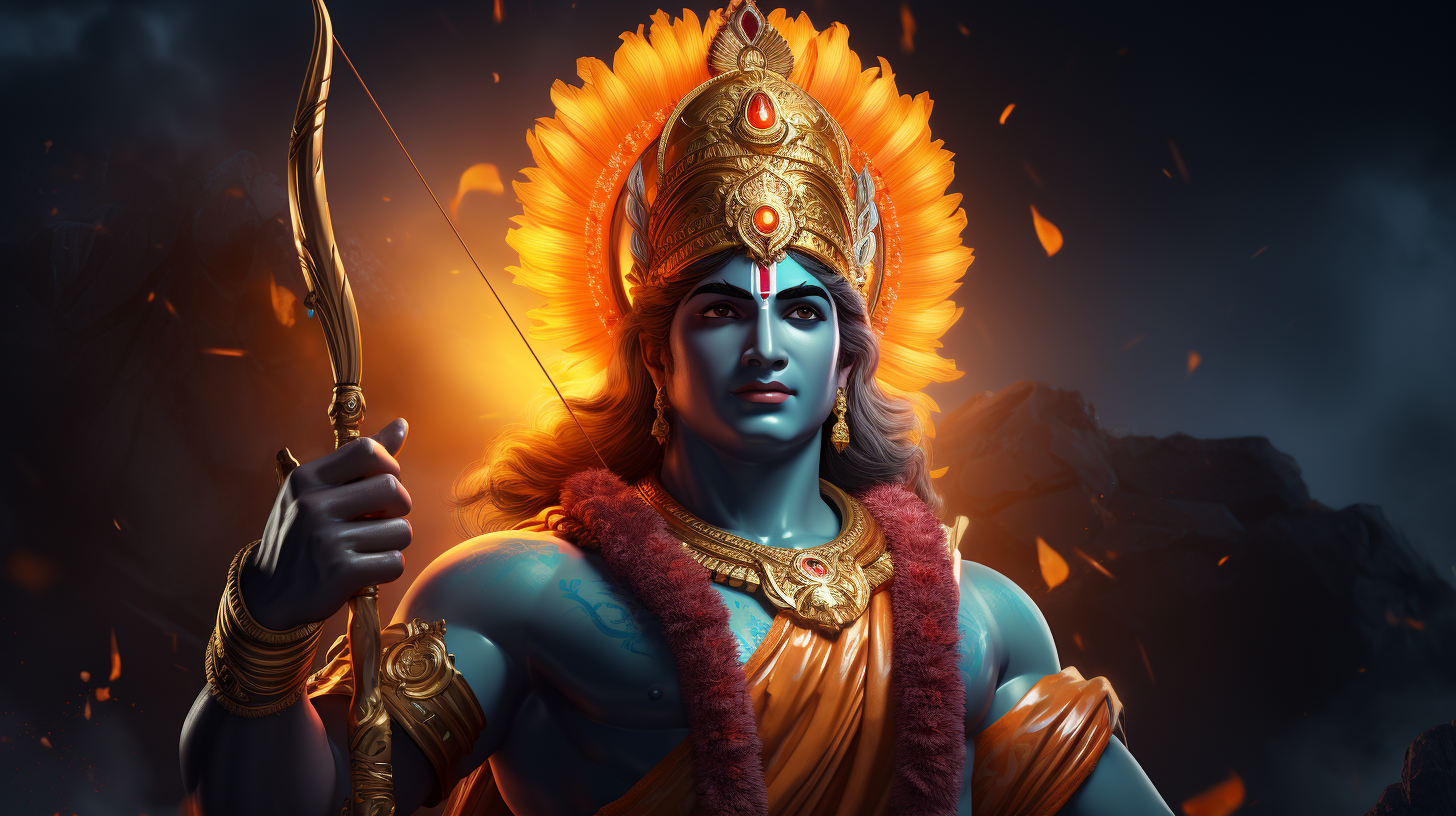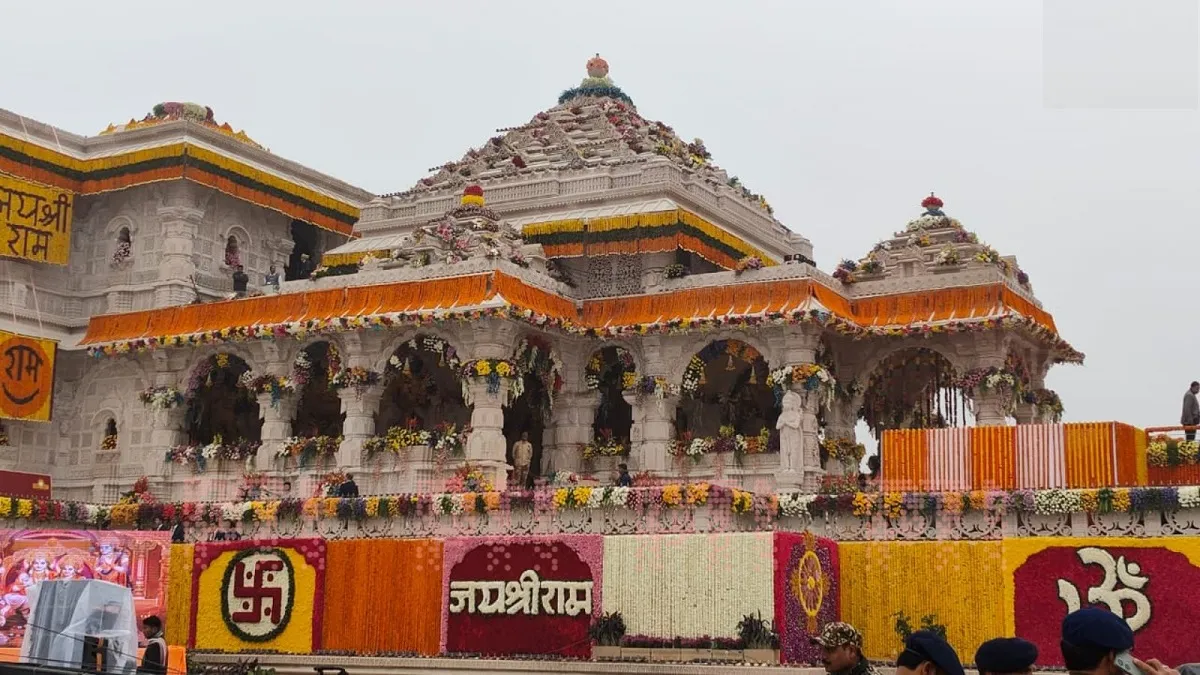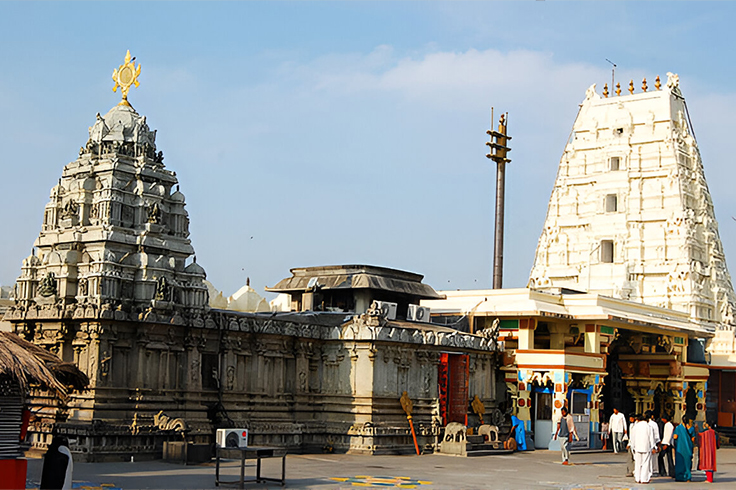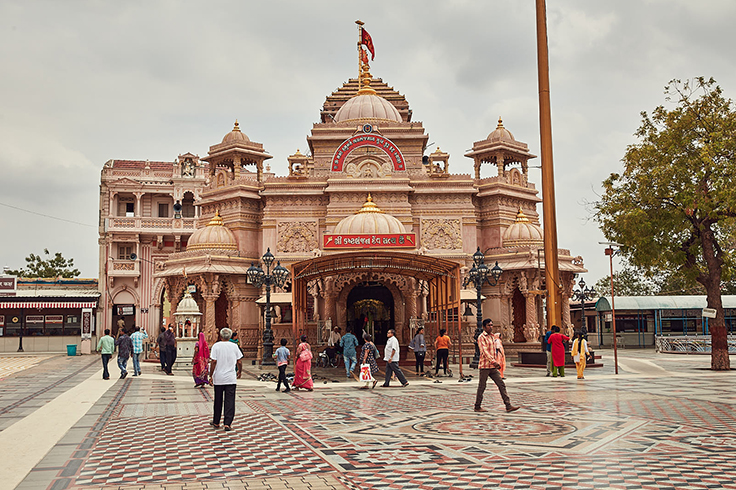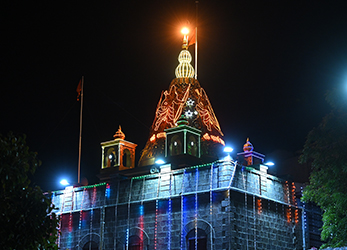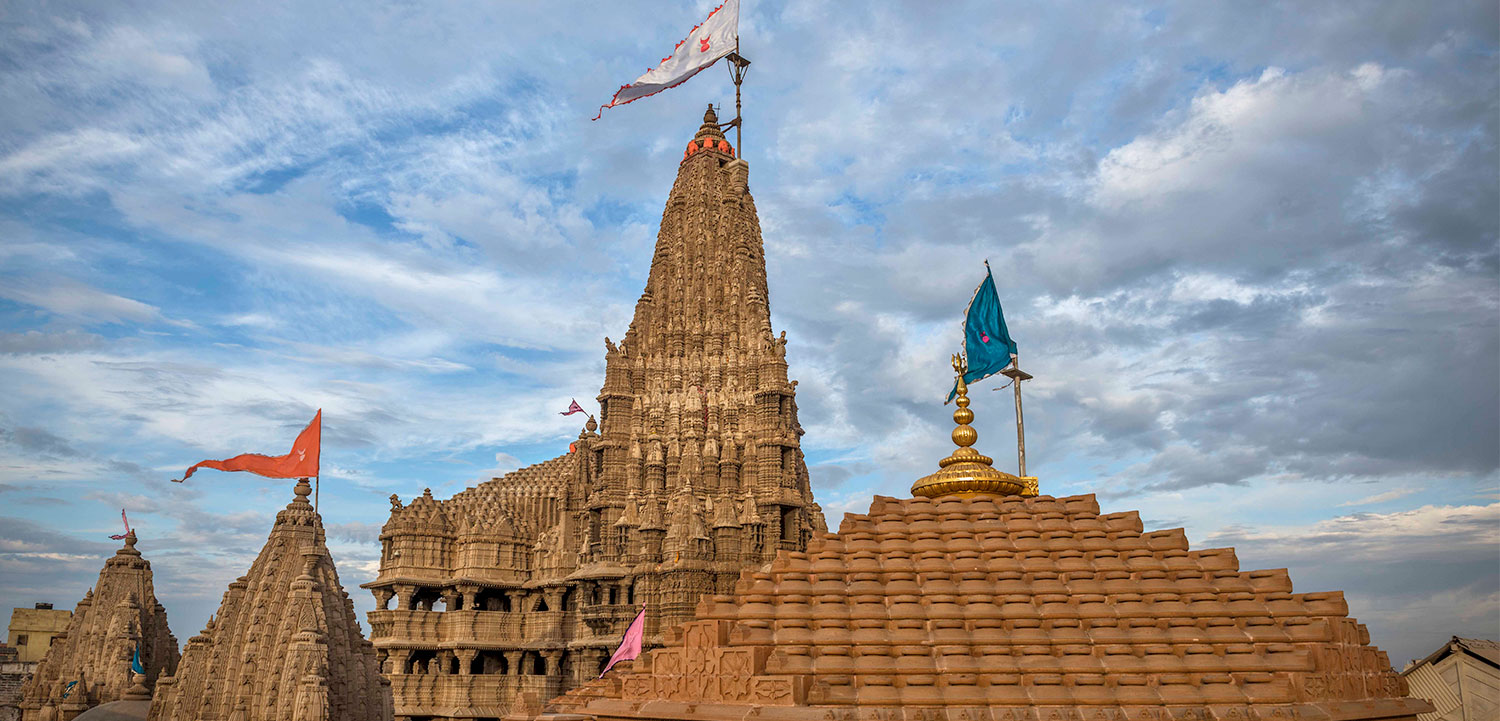Jai Devi Jai Mahalakshmi Lyrics – Laxmi Ji Ki Aarti
Jai Devi Jai Devi Jai Mahalakshmi।
Vasasi Vyapakarupe Tu Sthulasukshmi॥
Karvirpurvasini Survarmunimata।
Puraharavaradayini Muraharapriyakanta।
Kamalakare Jathari Janmavila Dhata।
Sahastravadani Bhudhara Na Pure Guna Gata॥
Jai Devi Jai Devi…॥
Matulinga Gada Khetaka Ravikirani।
Jhalake Hatakavati Piyusharasapani।
Manikarasana Surangavasana Mriganayani।
Shashikaravadana Rajasa Madanachi Janani॥
Jai Devi Jai Devi…॥
Tara Shakti Agamya Shivabhajaka Gauri।
Sankhya Mhanati Prakriti Nirguna Nirdhari।
Gayatri Nijabija Nigamagama Sari।
Pragate Padmavati Nijadharmachari॥
Jai Devi Jai Devi…॥
Amritabharite Sarite Aghadurite Vari।
Mari Durghata Asura Bhavadustara Tari।
Vari Mayapatala Pranamata Parivari।
He Rupa Chidrupa Davi Nirdhari॥
Jai Devi Jai Devi…॥
Chaturanane Kushchita Karmanchya Oli।
Lihilya Asatila Mate Majhe Nijabhali।
Pusoni Charanatali Padasumane Kshali।
Mukteshwara Nagara Kshirasagarabali॥
Jai Devi Jai Devi…॥
Mahalakshmi Aarti
The “Shri Lakshmi Aarti” is a Hindu devotional song or prayer that is sung to honor and praise Goddess Mahalakshmi, the Hindu goddess of wealth, prosperity, and good fortune. Goddess Mahalaxmi or Laxmi Devi is said to be the eternal partner of Lord Shri Hari Vishnu. She is said to be an avatar of Maha Shakti who segregated herself so that the world can function properly under the guidance of Tridev and they can carry out their role in the creation, preservation, and recreation of the universe.
Significance of Shri Mahalaxmi Praised in Shri Laxmi Aarti:
Goddess Lakshmi, also called Mahalaxmi, is a revered Hindu deity associated with wealth, prosperity, fortune, and abundance one of the principal deities in Hinduism. She is venerated by millions of devotees across India and in Hindu communities worldwide.
Mahalakshmi is typically depicted as a beautiful goddess with four arms, in her four-armed form, she carries various symbolic objects, including a lotus (symbol of purity), a pot of gold (symbol of wealth), and a mace and a discus (representing power and protection). She is often seen seated or standing on a lotus flower, which symbolizes purity and detachment. Devi Laxmi is considered the eternal consort of Lord Vishnu, one of the principal deities of the Hindu trinity. Together, they symbolize the divine union of wealth and preservation.
She is said to be the daughter of Mahasagar and the eternal consort of Lord Vishnu. Scriptures mention they are soulmates made for each other and whenever Shri Vishnu takes an avatar on earth she follows suit. Pertaining to these legends there are several Laxmi Mata names, and their companionship is a central theme in many Hindu God stories and legends mentioned in scriptures and Puranas.
Shri Laxmi is believed to have multiple manifestations of forms namely, Dhana Lakshmi (goddess of material wealth), Gaja Lakshmi ( goddess of power and strength), and Aishwarya Lakshmi (goddess of fortune and prosperity). She has a significant place in Hindu culture as the symbol of prosperity, abundance, and well-being. Her image is typically adorned with jewelry and fine garments reflecting her association with wealth and opulence. She is the embodiment of generosity, compassion, and grace. Any kind of wealth or property is a symbol of wealth as praised as the grace of Mata Lakshmi in Hinduism earning cash and money are worshipped as Goddess Laxmi.
History and Origin, Laxmi ji ki Aarti
The origin story of Lakshmi as mentioned in the scriptures is when the supreme goddess at the beginning of time and the creation of the universe segregated herself. The goddess Adi Shakti separated herself into three parts first Mahakali the essence of Adishakti and eternal partner of Shiv. Saraswati the goddess of knowledge art, and wisdom who is the dedicated eternal consort of lor Brahma the creator, as those qualities are required for creation. The third is Mata Lakshmi, the eternal consort of Shri Hari Vishnu the preserver of the world, hence the goddess of wealth, prosperity, and fortune so that the universe can be sustained.
Another story is said to be of Sagarmanthan where the sea was churned and 14 Maharatrna appeared from them and one of them is Goddess Laxmi decorated with shining ornaments with lotus in hand symbolizing fortune, grace, and wealth.
The existence of Gods and Goddesses is mentioned in scriptures and Puranas, all of which are texts having descriptions and details. Even so, to point out the exact origin of Laxmiji Aarti would be challenging as there are other complex aspects to the existence of Mata Laxmi in Atharva Veda having a plural manifestation that is said to be dated 1000 BCE.
Albeit the practice of Lakshmi Pooja, Laxmi Mata Aarti can be traced by Archeological findings. There are Archeological pieces of evidence like coins and sculptures that belong to the Pre-Kusha Empire, Maurya Empire, Shugna Empire, etc. There are archeological excavation sites like Vaishali, Sravasti, Kaushambi, Champa, and Candraketugadh where Lakshmi terracotta figurines from the 1st millennium BCE were found.
Meaning and Significance of Laxmi ji Ki Aarti
Laxmiji Ki Aarti is an essential part of Hindu religious rituals and traditions, especially during festivals and special occasions, as devotees seek Mata Laksmi’s blessing to obtain peace, wealth, goodness, and prosperity.
The Shri Laxmiji Aarti lyrics praise the goddess to invoke her grace expressing the worshipper’s gratitude. The aarti include verses that describe the attributes, significance, symbolism, beauty, and blessing of Goddess Laksmi in the Shri Lakshmi Aarti. The first line of the aarti introduces the goddess as the eternal consort of Shri Hari Vishnu and a praisable mother for the devotees.
Om Jai Laxmi Mata, Maiya Jai Laxmi Mata, Tumko nis din sevat, Hari, Vishnu Data
This Aarti Lakshmi Ji Ki invokes the presence of goddess Laxmi, they invite the goddess into the home to worship her seek her blessing, and express gratitude. While the Laxmi mata aarti is associated with material wealth it also signifies spiritual abundance and awakening, hence the Laxmiji aarti is a source of expression and obtaining the divine grace of the Goddess Laxmi.
Benefits of Aarti Lakshmi Ji Ki
Sound and words have great significance in Hindu tradition and culture, as it is said to hold power, hence the practice of Stotra, Mantra, and Aarti has been prominent in Hinduism. There are certain benefits of aarti, here are certain benefits of Maa Lakshmi Aarti,
- The sound is said to be the origin of the universe and it creates vibrations that are essential to invoke the divine grace along with positive words and praises in the Laxmiji ki aarti it helps please the goddess and gain her blessing
- The aarti Laksmi ji ki is not just to express gratitude and worship the goddess but also invite the divine prosperity and abundance in our humble abode
- Along with having material blessings and benefits for the Laxmi mata aarti, it also provides spiritual growth and attainment of peace
- The regular reciting of Shri Lakshmi ji ki Aarti creates a positive atmosphere and maintains a connection with the divine promoting a sense of devotion and reverence and seeking the blessing of goddess Lakshmi for a life filled with happiness and prosperity
Lakshmi Mata Aarti Practice and Pooja:
Irrespective of any sect in Hinduism praising Mata Laksmi is followed by all as she is said to be the goddess of wealth and abundance. There are Laxmi Devi Mantra, Lakshmi Mata Stotra, and Lakshmi Mata stuti written and sung in praise of Goddess Lakshmi.
Lakshmi mata pooja is done dedicatedly on Thursday as there is a tradition of Margashis Guruvar followed around November-December where a symbolism of devi is established in homes every Thursday. In the evening there is pooja done by offering fruits, Naivedya, lighting essence sticks, and Diya’s (lamps) while singing Laxmi Mata Aarti, and mantra where women organize the event of Haldi Kumkum. All of which not only talk of material but, spiritual and philosophical upliftment through the traditional Laxmi poojan.
Another grand festival dedicated to a celebration of Mahalakshmi is the popular Hindu festival Diwali, during which she is reverently worshipped to invite the blessing of prosperity and well-being into their homes. Devotees often recite Lakshmi Bhajan, Lakshmi Aarti, and Laxmi Stuti seeking her blessing. Shri Laxmi Ji Ki Aarti is practiced in several households in India, and often sung in regional languages like Marathi, Hindi, and other dialects, Lakshmi Aarti may have regional variations in lyrics and music but the intention and emotion are equivalent all over.



